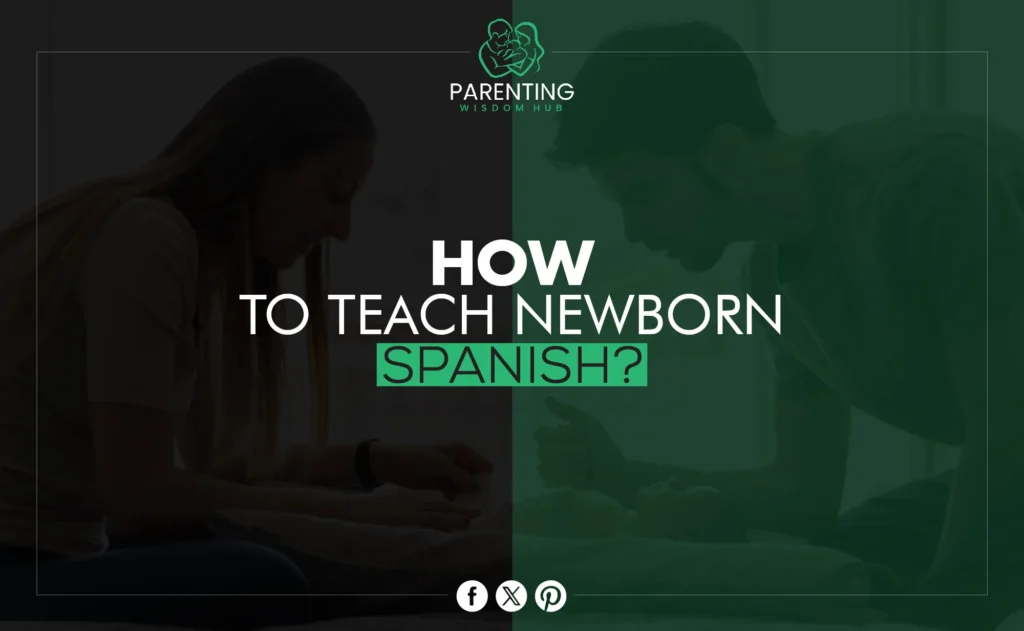Introduction
In a world that is becoming increasingly linked, teaching your child a second language can help them in many ways. Teaching a newborn Spanish is helpful for new parents and bilingual families and can be fun. This piece will provide useful tips and advice on effectively preparing an infant’s Spanish.
Why Start Language Learning Early?
Research suggests that early second language exposure is best. Babies are born language-savvy and have sponge-like brains that absorb sounds and patterns. Starting early promotes fluent bilingualism, cognitive development, and cultural understanding. Early language exposure aids sound separation, essential for listening and speaking. It also helps your youngster comprehend the world by strengthening cultural ties.
Raising a Bilingual Baby
Raising a multilingual child has several benefits. First, it boosts cognition, improving problem-solving and multitasking. Due to improved focus and memory, bilingual youngsters perform academically. Second, it helps your youngster socialize and respect diverse cultures. Finally, many businesses favor multilingual workers, which may boost your career.
Myths About Bilingual Babies
Several myths about newborn bilingualism must be addressed. One is that learning two languages confuses babies. This is not true—babies are great at distinguishing languages. Another myth is that multilingual kids will speak later. Some bilingual youngsters first mix languages, yet they typically outperform monolingual classmates. Some assume only native speakers can teach a kid a language, yet immersion and constant exposure are crucial regardless of parent proficiency.
Language-Rich Environment
Introduce newborn Spanish in a language-rich environment. Daily exposure to Spanish sounds, words, and interactions is required. Read Spanish books, sing lullabies, and play Spanish music. Different exposure improves learning. Introducing Spanish terms at meals or bath time may make language learning a habit. Spanish in playtime engages and makes learning pleasant and natural.
Music and Songs
Music helps language development. Babies like rhythm and melody, making songs great for teaching Spanish. Use Spanish nursery rhymes and children’s music to teach pronunciation and vocabulary. Singing with your infant develops bonds and improves hearing. Songs help infants remember words by reinforcing linguistic patterns. Song understanding and recall may be enhanced by using gestures and motions.
Storytime in Spanish
Reading to your infant helps language development. Choose bilingual or Spanish novels to increase exposure. Picture books work well because pictures contextualize words. Point to images and name items in Spanish to get your infant to imitate sounds during storytime. Discuss the story’s events and characters as they mature to improve understanding. Reading consistently promotes language learning and book love.
Spanish-speaking peers
Socializing is essential for language acquisition. Play with Spanish-speaking babies or join multilingual parenting clubs. Peers speaking Spanish improve language understanding and communication. Community and cultural identity are also fostered. Seeing and talking to other Spanish-speaking kids may inspire your infant to learn. Group activities like sing-alongs and storytelling may also boost language acquisition.
Spanish into Daily Routines
Routine activities are ideal for language learning. Use essential Spanish words for diapering, feeding, and dressing. Say “vamos a comer” or “es hora de dormir” to eat or sleep. Make Spanish part of your daily routine for consistency. Associating language with regular activities improves context and vocabulary. As your infant develops, gradually increase phrase complexity to encourage learning.
Technology in Language Learning
Technology can help teach Spanish. Introduce Spanish words and sounds with infant-friendly apps and videos. Screen time should be restricted and engaging to optimize advantages. Interactive storytelling, games, and melodies may boost learning in apps. Digital exposure and real-life interactions must be balanced for complete language development. To ensure meaningful learning, oversee and lead your infant via digital material.
Spanish with Other Learning Activities
Adding Spanish to learning activities enhances it. Language study with art, music, or physical activity creates a complete education. Name colors and shapes in Spanish or use Spanish directions in physical games for creative projects. This method teaches language and strengthens cognitive and physical skills. Bilingual learning is fun and memorable when creativity and investigation are encouraged.
Progress and Adjusting Techniques
Every kid learns differently, so tracking development and altering teaching methods is essential. Assess your baby’s reaction to various techniques and adjust accordingly. Celebrate minor victories to stay motivated. If some methods don’t work, try others to keep people interested. Language acquisition takes time, so be patient. Language learning should be fun.
Staying Motivated and Consistent
Raising a multilingual child requires consistency. Maintain Spanish throughout everyday conversations and activities. Set reasonable objectives and measure progress to stay motivated. Join bilingual families for inspiration and support. Celebrate accomplishments and be patient throughout challenges—perseverance pays off. Building a multilingual foundation for your kid takes time, but the benefits are worth it.
The Long-Term Benefits of Bilingualism
Bilingualism has benefits beyond infancy. Bilingual people have more cognitive flexibility, communication abilities, and cultural sensitivity. They have more job options and are more prepared for globalization. Teaching your newborn Spanish enriches their upbringing and prepares them for success and satisfaction. Your bilingualism efforts will benefit your child’s personal and professional life.
Encouraging Active Participation
Families should push their children to be involved in creating a bilingual setting that works. Play games, sing songs, and do things with your child that require them to use Spanish. This kind of direct participation helps people understand and remember the language better.
Building a Supportive Community
Making links with other bilingual families or joining language study groups can be very helpful. Sharing experiences and plans can make the trip more fun and help you find better ways to learn.
Integrating Language with Culture
Check out things to do that have to do with Spanish-speaking countries’ culture, like making traditional foods, going to cultural events, or watching movies in Spanish. This method makes learning a language fun and helps you understand the culture better.
Overcoming Language Barriers
Be open and creative to get around any language hurdles you may face. Look for tools that can help you get through tough times, like language classes, online tutors, or bilingual schooling programs. If you need more help to keep your language growth on track, think about getting it.
Encouraging Curiosity and Exploration
If you encourage your child to ask questions and look up words or phrases they don’t know, they will naturally be interested in the Spanish language. Using the desire to spark a love of learning leads to a lasting interest in learning a language, which makes the process more effective and enjoyable.
Conclusion
Teaching your newborn Spanish is gratifying and lasting. Establishing a language-rich environment, participating in interactive activities, and being consistent can raise a multilingual newborn. Remember, every action you take today opens doors to opportunity and cultural diversity. If you need help, join bilingual parenting forums or consult language professionals. Your efforts to develop your child’s language skills will make them confident, competent, and culturally aware.


